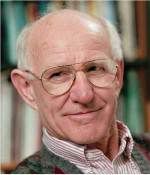Pandemic influenza awareness week. Day 2: Our adventures with avian flu
 Anyone working in the area of influenza virus epidemiology is familiar with the name Robert Webster. A virologist at St. Jude’s Children’s Hospital in Memphis, the native New Zealander has been leading the charge against influenza for well over 40 years. Barely out of graduate school, Webster hypothesized that something like genetic reassortment (which had not yet been discovered) occurred to cause the big changes that appeared among human influenza viruses, driving pandemics. He performed a simple experiment that cemented the course of his career: he found that serum from patients who had survived the 1957 influenza pandemic reacted with avian influenza viruses. Later genetic analyses showed that the “Asian flu” virus had indeed received 3 of its 8 gene segments from birds. It happened again in 1968: the pandemic virus was the result of a reassortment between human and avian influenza viruses. These observations led to more than 30 years of surveillance of waterfowl in many different countries, and the revelation that these waterfowl constitute a reservoir of all known subtypes of influenza virus.
Anyone working in the area of influenza virus epidemiology is familiar with the name Robert Webster. A virologist at St. Jude’s Children’s Hospital in Memphis, the native New Zealander has been leading the charge against influenza for well over 40 years. Barely out of graduate school, Webster hypothesized that something like genetic reassortment (which had not yet been discovered) occurred to cause the big changes that appeared among human influenza viruses, driving pandemics. He performed a simple experiment that cemented the course of his career: he found that serum from patients who had survived the 1957 influenza pandemic reacted with avian influenza viruses. Later genetic analyses showed that the “Asian flu” virus had indeed received 3 of its 8 gene segments from birds. It happened again in 1968: the pandemic virus was the result of a reassortment between human and avian influenza viruses. These observations led to more than 30 years of surveillance of waterfowl in many different countries, and the revelation that these waterfowl constitute a reservoir of all known subtypes of influenza virus.
Webster’s worst fears seemed to be coming true in 1997. Hong Kong was experiencing an influenza outbreak in chickens so severe it had been nicknamed “chicken Ebola.” Humans were also affected. The first case was in a 3-year-old boy from Hong Kong. Though doctors knew he had died of the flu, they were uncertain of the strain, and sent samples off to several high-level laboratories for further testing. When it came back H5N1, the Centers for Disease Control and Prevention sent Keiji Fukuda to Hong Kong to investigate. After a month of searching, he and his team found no further evidence of infection with this avian virus in the human population—so they left, writing off the boy’s illness as a “freak occurrence.” They were premature. By the end of the year, 18 cases had been confirmed; 6 died. Clinical features often included a primary viral pneumonia and death quickly after onset of symptoms. The route of transmission in all cases appeared to be direct bird-to-human contact. Fearing a public health crisis, officials ordered the culling of Hong Kong’s entire poultry population. Analysis of the virus showed it to be a serotype H5N1 virus.
